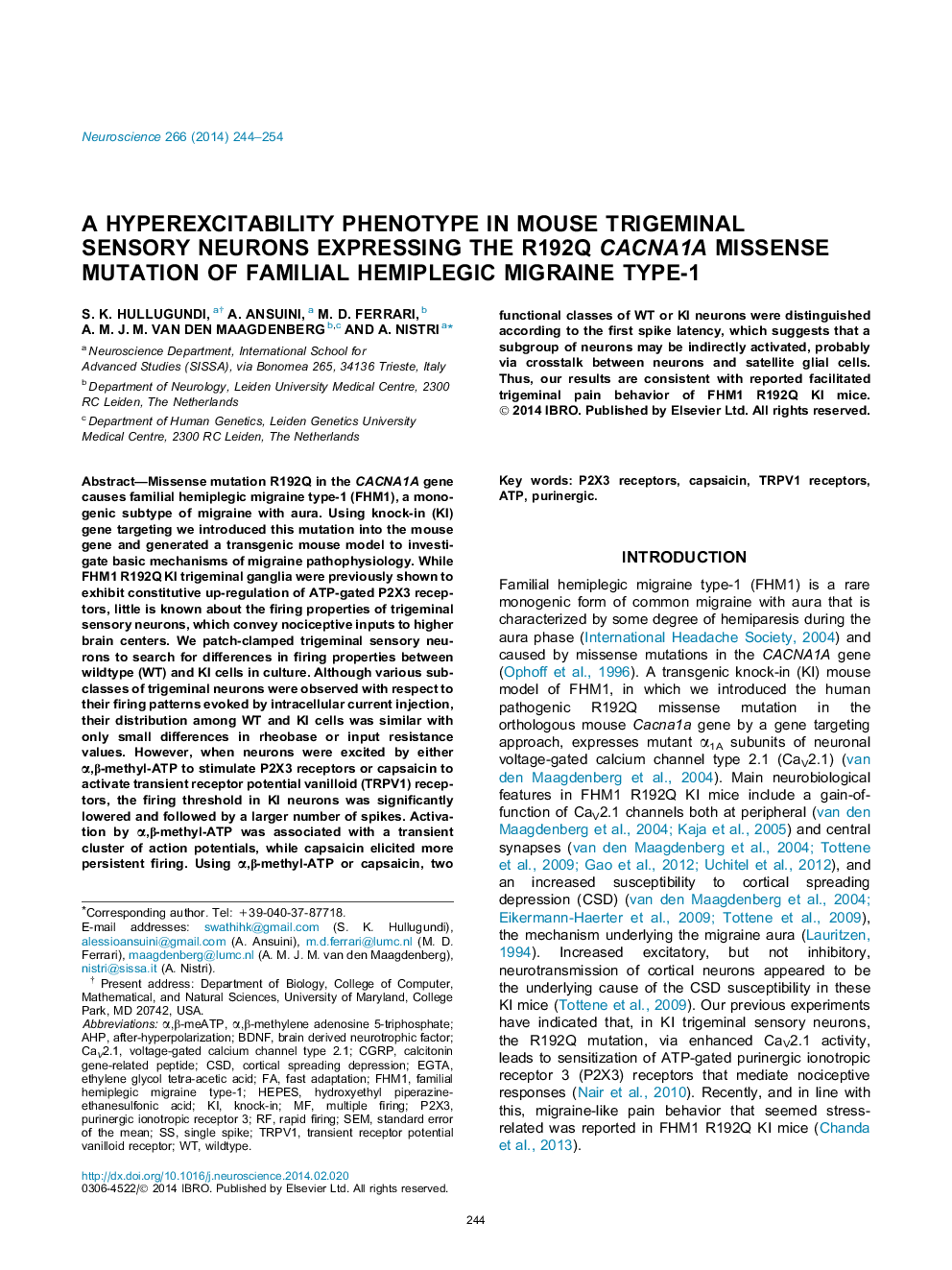| کد مقاله | کد نشریه | سال انتشار | مقاله انگلیسی | نسخه تمام متن |
|---|---|---|---|---|
| 4337694 | 1614810 | 2014 | 11 صفحه PDF | دانلود رایگان |

• Trigeminal sensory neurons of a genetic migraine mouse model were patch-clamped.
• No difference in firing evoked by current pulses vs control was seen.
• Pulse activation of P2X3 or TRPV1 receptors revealed lowered spike threshold.
• Pulse activation of P2X3 or TRPV1 receptors also evoked more spikes.
• First report of increased excitability of sensory neurons in genetic migraine model.
Missense mutation R192Q in the CACNA1A gene causes familial hemiplegic migraine type-1 (FHM1), a monogenic subtype of migraine with aura. Using knock-in (KI) gene targeting we introduced this mutation into the mouse gene and generated a transgenic mouse model to investigate basic mechanisms of migraine pathophysiology. While FHM1 R192Q KI trigeminal ganglia were previously shown to exhibit constitutive up-regulation of ATP-gated P2X3 receptors, little is known about the firing properties of trigeminal sensory neurons, which convey nociceptive inputs to higher brain centers. We patch-clamped trigeminal sensory neurons to search for differences in firing properties between wildtype (WT) and KI cells in culture. Although various subclasses of trigeminal neurons were observed with respect to their firing patterns evoked by intracellular current injection, their distribution among WT and KI cells was similar with only small differences in rheobase or input resistance values. However, when neurons were excited by either α,β-methyl-ATP to stimulate P2X3 receptors or capsaicin to activate transient receptor potential vanilloid (TRPV1) receptors, the firing threshold in KI neurons was significantly lowered and followed by a larger number of spikes. Activation by α,β-methyl-ATP was associated with a transient cluster of action potentials, while capsaicin elicited more persistent firing. Using α,β-methyl-ATP or capsaicin, two functional classes of WT or KI neurons were distinguished according to the first spike latency, which suggests that a subgroup of neurons may be indirectly activated, probably via crosstalk between neurons and satellite glial cells. Thus, our results are consistent with reported facilitated trigeminal pain behavior of FHM1 R192Q KI mice.
Journal: Neuroscience - Volume 266, 25 April 2014, Pages 244–254